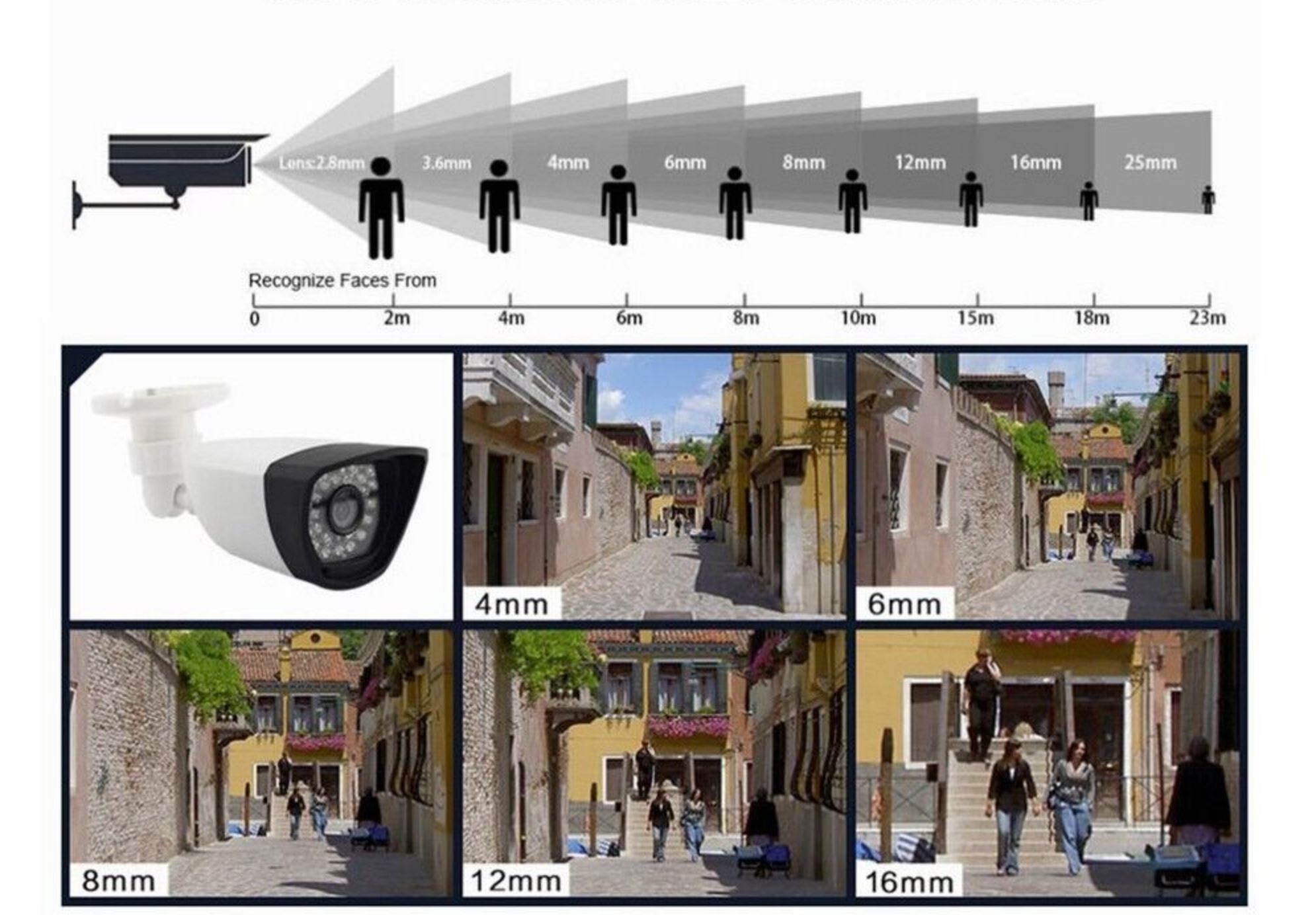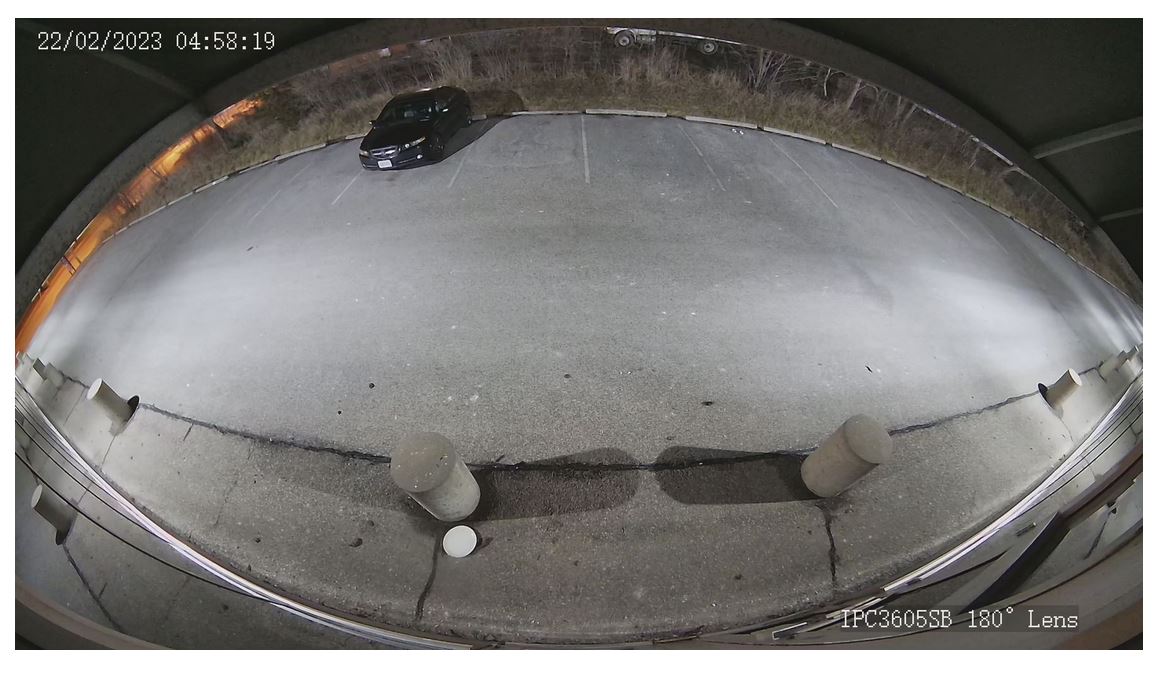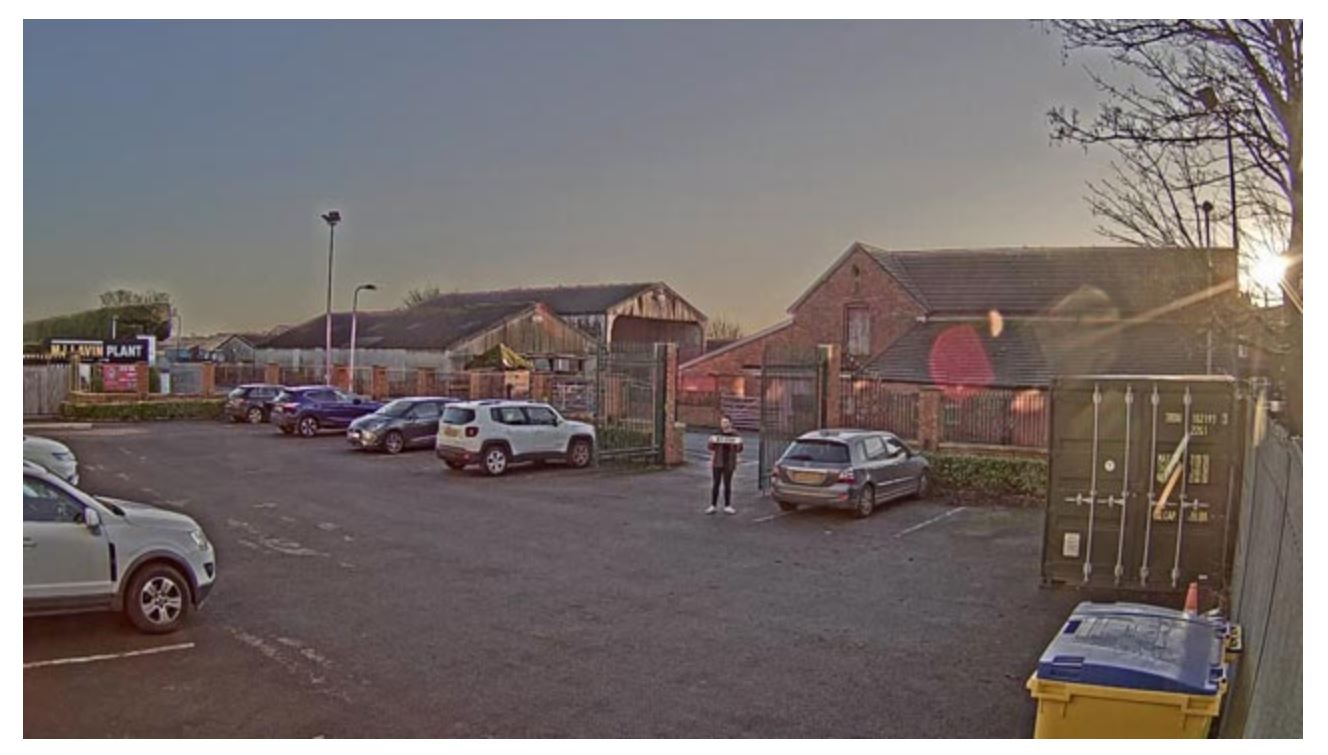Field of View (FOV)
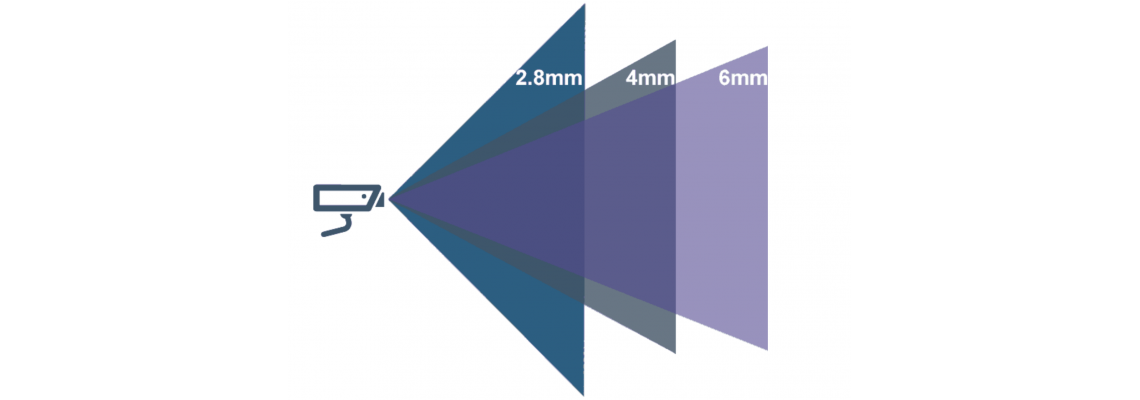
One of the most crucial technical features to consider when choosing a camera for your needs is its field of view (FOV)!
The field of view is determined by several technical parameters of the camera, including the image sensor and the focal length of the lens. It is the distance between the optical center of the lens, where light is focused, and the image sensor onto which the light falls.
The field of view is mostly influenced by the focal length of the lens, which is indicated in millimeters in technical specifications. It can happen that cameras with, for example, a 2.8mm lens have different fields of view in certain situations.
The smaller the focal length, the wider the camera's field of view. A clear example is shown below:
Cameras with a very wide field of view, for example, up to 180°, are available. Cameras that provide a very wide field of view create a distorted image known as the "fish-eye" effect.
You can install such a camera perpendicular to a straight wall, and you will get visibility across the entire area from the left side to the right side of the camera.
! This solution is well-suited for overall visibility of the area or when you need to see a wide area at a close distance, such as a hallway or room.
! Less suitable when details are important, such as faces, if they are not close to the camera at a given moment. Of course, detail visibility can be improved by using a camera with higher resolution, thus allowing details to be seen at a greater distance, but it still won't compare to a camera with a narrower field of view.
Cameras with a wide field of view, for example, 100°, similar to the aforementioned fish-eye camera, are suitable for an overall view of a large area. By installing such a camera in a corner of the area, assuming it is a right angle, you will achieve visibility from one side to the other.
Unlike cameras with a very wide field of view, such a camera will have a significantly less distorted image or even no curved edges at all.
More and farther details will be noticeable, which, of course, is also influenced by the camera's resolution; with higher resolution cameras, details will be noticeable at a greater distance.
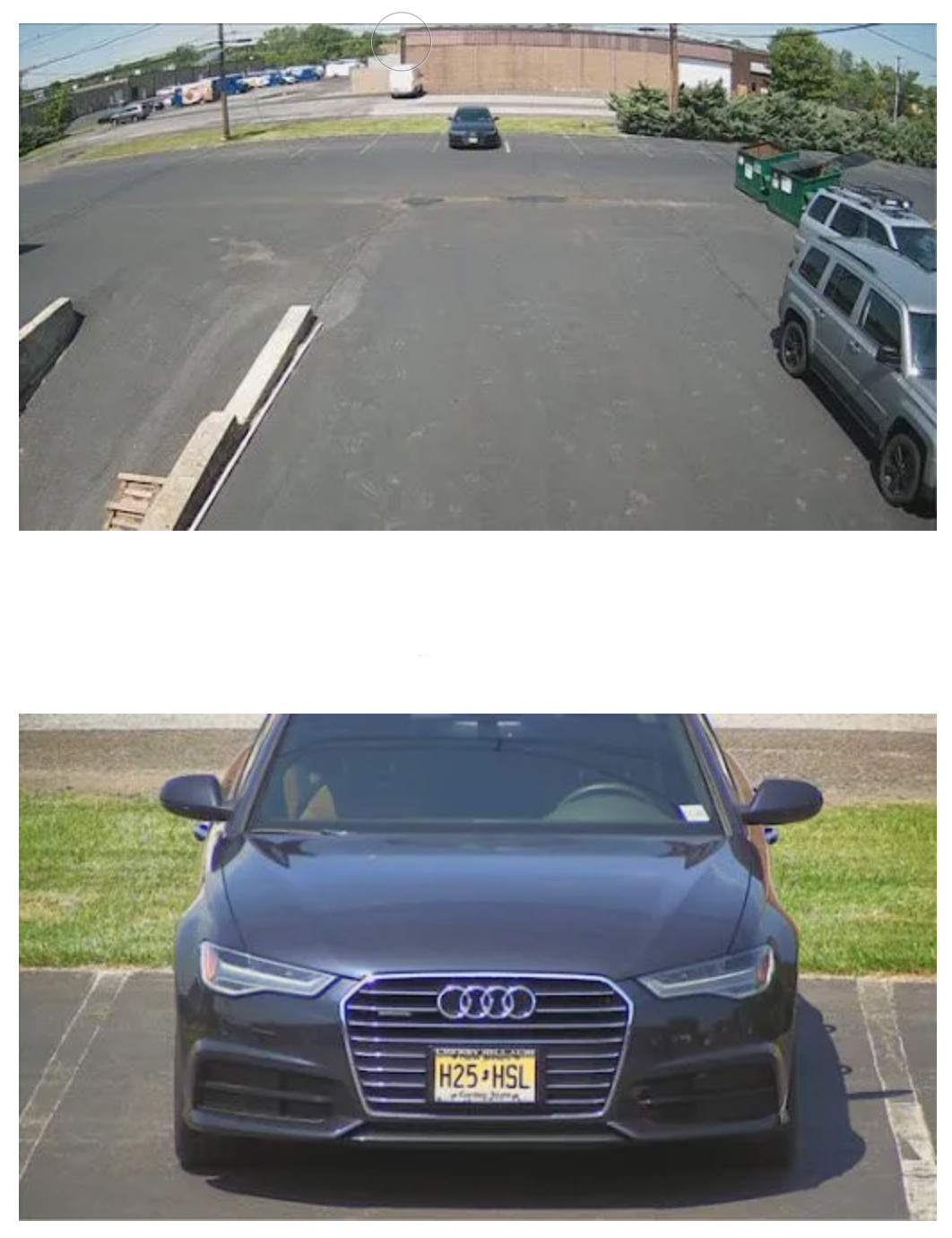
If details are important, the most suitable option would be a camera with a narrow field of view, directed specifically at the necessary details, such as car license plates, human faces, etc.
As shown in the examples to the left.
The narrower the camera's field of view, the better the aforementioned details will be visible, but objects closer to the camera will remain outside the frame.
Of course, focusing the camera on each detail can become an disproportionately expensive solution, so, as a compromise, it would be best to use both a camera with a wide field of view and one with a narrow field of view.
For an overall view of a room or area, use a camera with a wide field of view, and for details, use a camera with a narrow field of view that focuses on specific areas such as driveways, gates, doors, etc.
Please note that sample images are intended to provide a general idea of changes in the field of view and are not directly applicable to the image quality of a specific camera.

